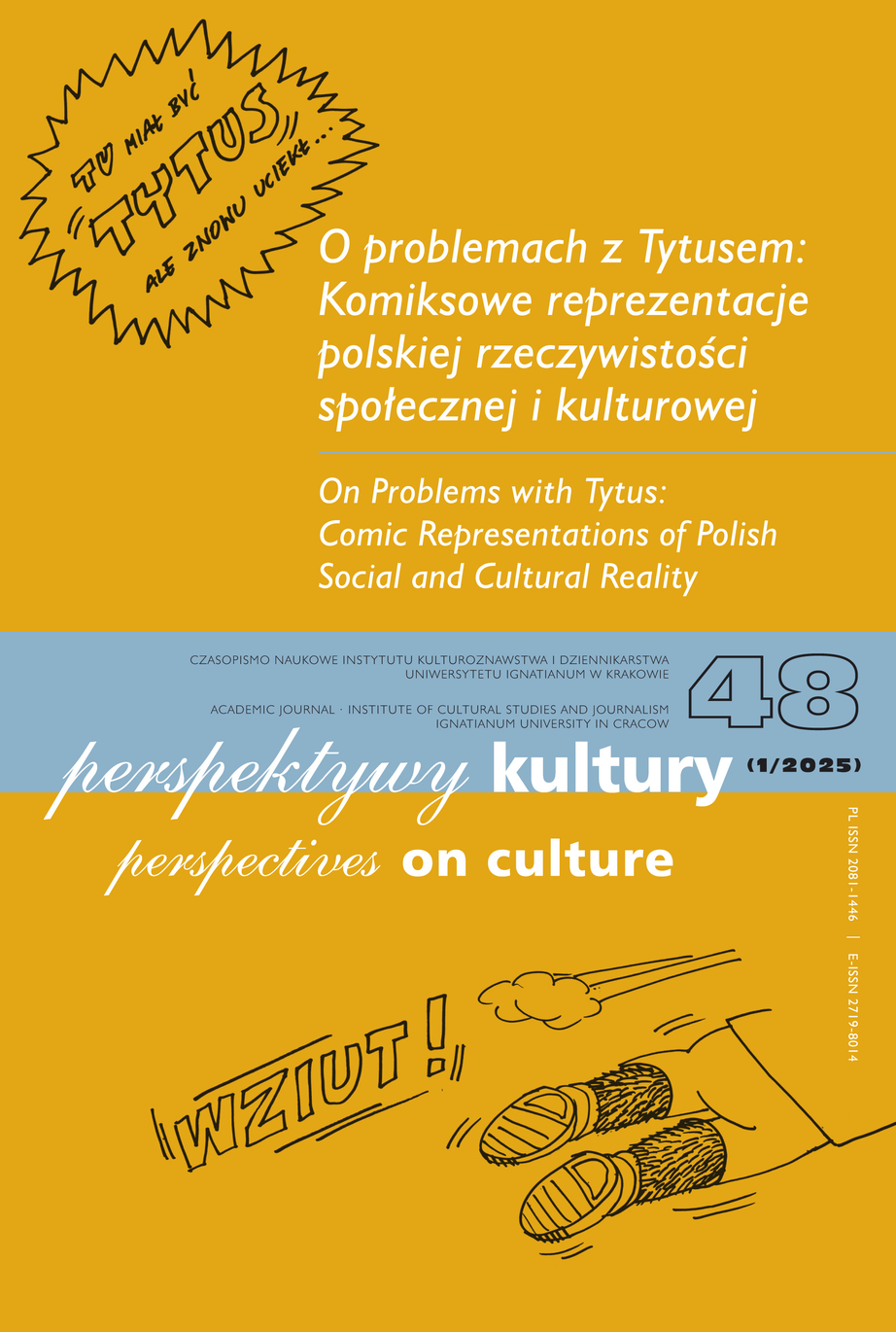What Language for Sielanka?
On the Etymology and Nomenclature of the Genre
Abstract
The article What Language for Sielanka? On the Etymology and Nomenclature of the Genre explores the terminological transformations and the distinctions associated with the sielanka. It analyzes the most important contemporary dictionary explanations of sielanka in other European languages, including French (idylle), English (idyll), German (die Idylle) with the accompanying Laus ruris convention, Russian (идиллия –idilliya), and finally Polish (sioło/sielanka), comparing them with ancient nomenclature. The article discusses a set of criteria characteristic of the original names of the genre, derived from the Greek works of Theocritus and the Latin works of Virgil. It examines the relationship between current and traditional names, such as aegloga, idyll, eidullion, carmen bucolicum etc. The widespread use of genre-specific terminology in pastoral poetry is presented as a consequence of the genre’s prolific expansion in national literatures, which have invariably used ancient models, taking up and reinterpreting the idyll to the present day.
References
Szymonowicz, S. (1914). Sielanki i inne wiersze polskie. J. Łoś (wyd.). Kraków: Polska Akademia Umiejętności.
Von Kleist, E. Ch. (1804). Frühling. Berlin: bei Johann Friedrich Unger.
Bernacki, M., Pawlus, M. (1999). Słownik gatunków literackich. Bielsko-Biała: PPU "PARK".
Colletet, G. (1657). Discours du poème bucolique, où il est traitté de l'églogue, de l'idyle et de
la bergerie. Paryż: Chamhoudry.
Cuddon, A. (1982). A Dictionary of literary terms. Londyn: Penguin Books.
Czabanowska-Wróbel, A. (2009). Takich ogrodów nie znajdziesz na świecie. Teksty Drugie, nr 3, 140-146.
Gawiński, J. (2007). Sielanki z gajem zielonym. E. Rot (wyd.). Warszawa: Instytut Badań Literackich PAN.
Głowiński, M., Kostkiewiczowa, T., Okopień-Sławińska, A., Sławiński, J. (1989). Słownik terminów literackich. Wrocław: Ossolineum.
Jarrety, M. (2001). Lexique des termes littéraires. Paryż: Le Livre de Poche.
Kalivoda, G. (1998). Historisches Wörterbuch der Rhetorik. Tübingen: De Gruyter.
Krzewińska, A. (1979). Sielanka staropolska, jej początki, tradycje i główne kierunki rozwoju. Warszawa-Poznań-Toruń: PWN.
Michałowska, T. (1975). Gatunek staropolski – obiekt i narzędzie poznania historycznoliterackiego. Pamiętnik Literacki, nr 2(66), 99-124.
Nadolski, B. (1961). Polski Słownik Biograficzny. Wrocław: PAN.
Nauert, G. Ch. (2005). Hessus Helius Eobanus. Reviews – the Poetic Works of Helius Eobanus Hessus: Student Years at Erfurt, 1504-1509. Renaissance Quarterly, nr 1(58), 257-259.
Pelc, J. (1994). Literatura renesansu w Polsce. Warszawa: Wydawnictwo Naukowe Semper.
Pontani, J. (1593). Poeticarum institutionum libri tres. Ingolstadii: Excudebat Adam Sartorius.
Rieger, J. (2014). Słownictwo polszczyzny gwarowej na Brasławszczyźnie. Warszawa: Wydawnictwo Naukowe Sub Lupa.
Scaliger, J. C. (1561). Poetices libri septem. Lyon: apul Antonivm Vincentivm.
Szymczak, M. (1992). Słownik języka polskiego. Warszawa: PWN.
Walińska, M. (2003). Mitologia w staropolskich cyklach sielankowych. Katowice: Gnome.
Viperano, G. A. (1579). De poetica libri tres. Antwerpia: Ex officina Chriftophori Plantini.
Ziomek, J. (2012). Renesans. Warszawa: PWN.
Copyright (c) 2025 Perspectives on Culture

This work is licensed under a Creative Commons Attribution-NoDerivatives 4.0 International License.
Autor, zgłaszając swój artykuł, wyraża zgodę na korzystanie przez Wydawnictwo Uniwersystet Ignatianum z utworu na następujących polach eksploatacji:
- utrwalania utworu w formie papierowej, a także na nośniku cyfrowym lub magnetycznym;
- zwielokrotnienia utworu dowolną techniką, bez ograniczenia ilości wydań i liczby egzemplarzy;
- rozpowszechniania utworu i jego zwielokrotnionych egzemplarzy na jakimkolwiek nośniku, w tym wprowadzenia do obrotu, sprzedaży, użyczenia, najmu;
- wprowadzenia utworu do pamięci komputera;
- rozpowszechniania utworu w sieciach informatycznych, w tym w sieci Internet;
- publicznego wykonania, wystawienia, wyświetlenia, odtworzenia oraz nadawania i reemitowania, a także publicznego udostępniania utworu w taki sposób, aby każdy mógł mieć do niego dostęp w miejscu i czasie przez siebie wybranym.
Wydawca zobowiązuje się szanować osobiste prawa autorskie do utworu.





